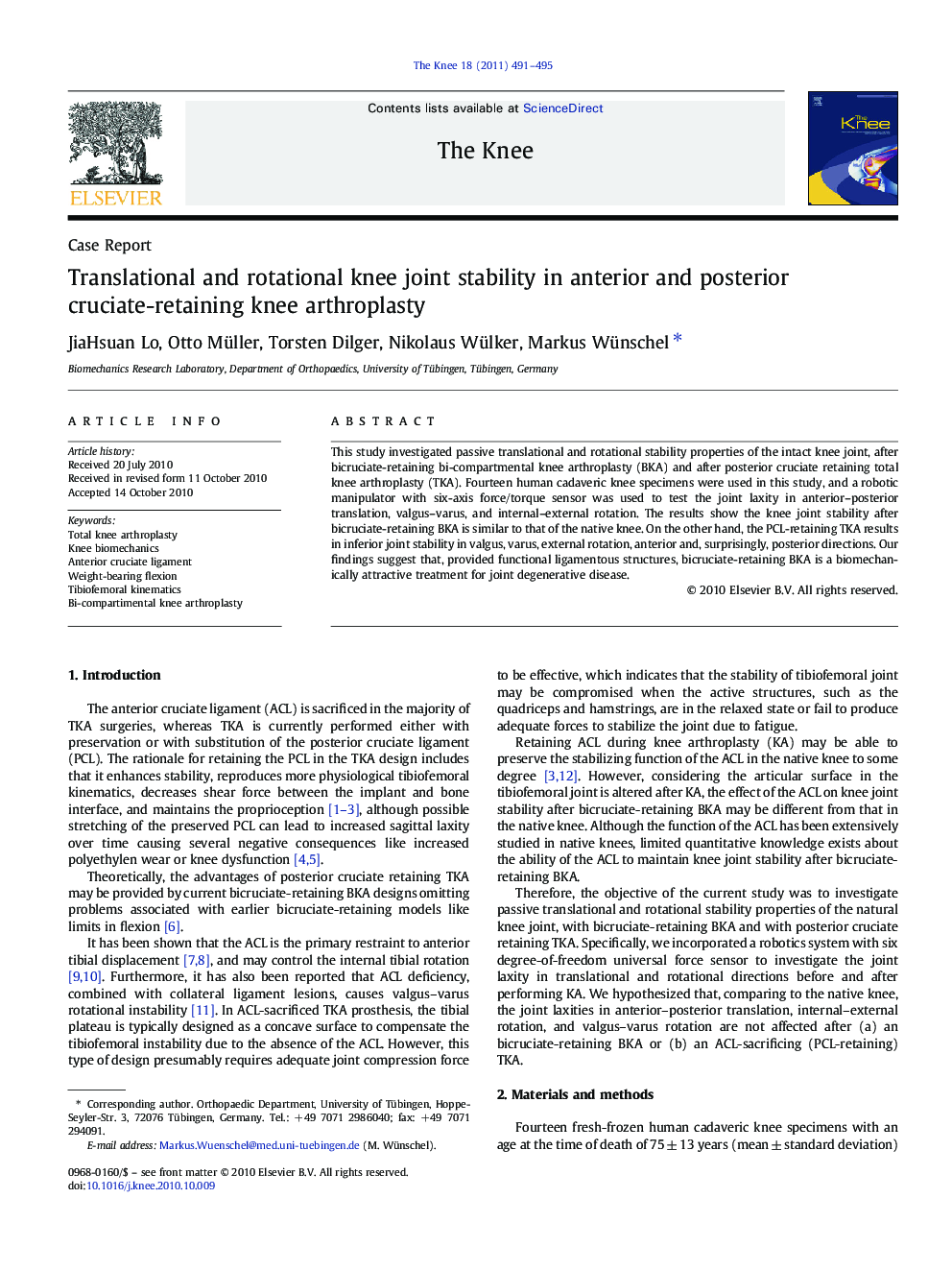| Article ID | Journal | Published Year | Pages | File Type |
|---|---|---|---|---|
| 4077716 | The Knee | 2011 | 5 Pages |
This study investigated passive translational and rotational stability properties of the intact knee joint, after bicruciate-retaining bi-compartmental knee arthroplasty (BKA) and after posterior cruciate retaining total knee arthroplasty (TKA). Fourteen human cadaveric knee specimens were used in this study, and a robotic manipulator with six-axis force/torque sensor was used to test the joint laxity in anterior–posterior translation, valgus–varus, and internal–external rotation. The results show the knee joint stability after bicruciate-retaining BKA is similar to that of the native knee. On the other hand, the PCL-retaining TKA results in inferior joint stability in valgus, varus, external rotation, anterior and, surprisingly, posterior directions. Our findings suggest that, provided functional ligamentous structures, bicruciate-retaining BKA is a biomechanically attractive treatment for joint degenerative disease.
